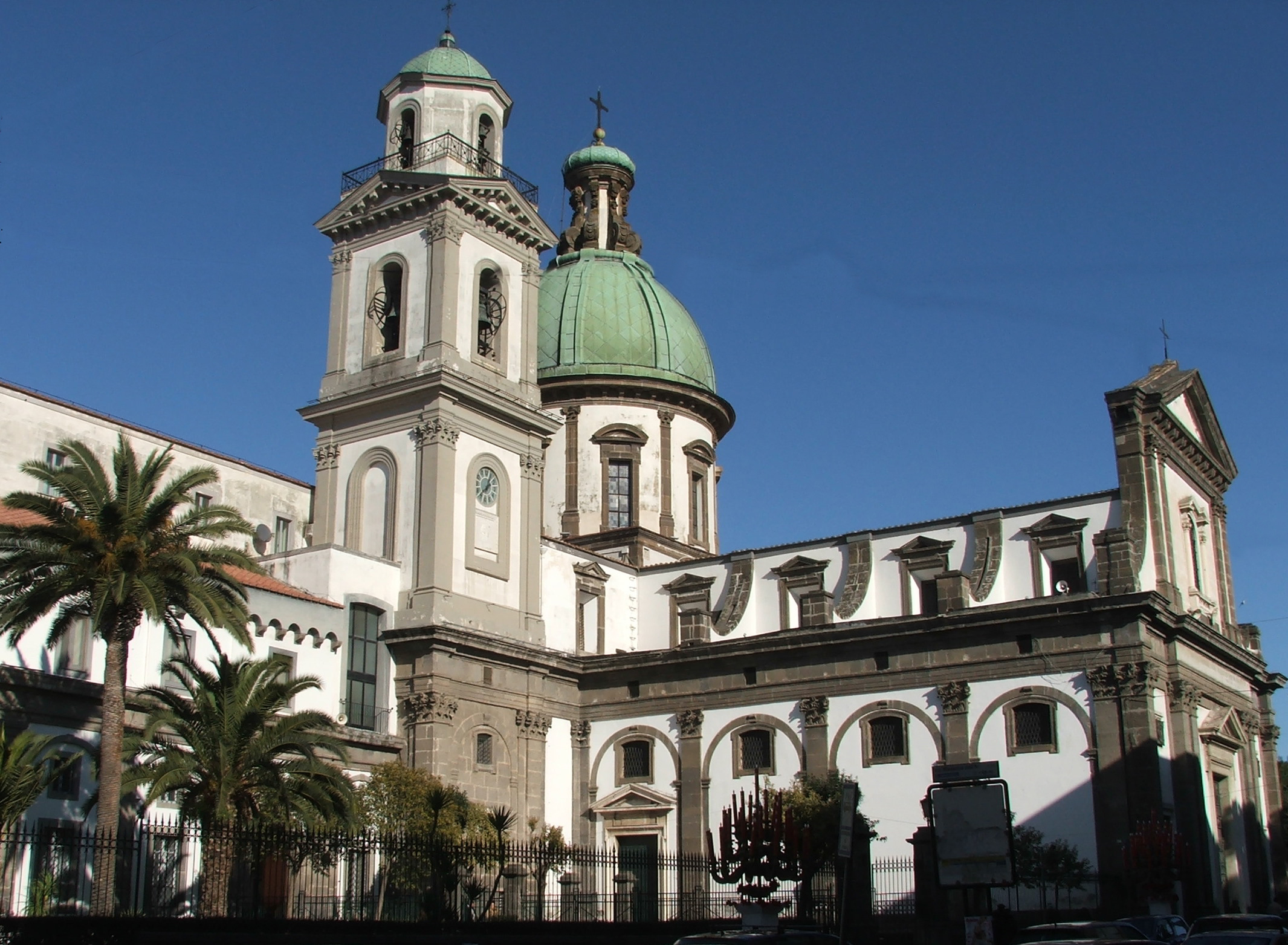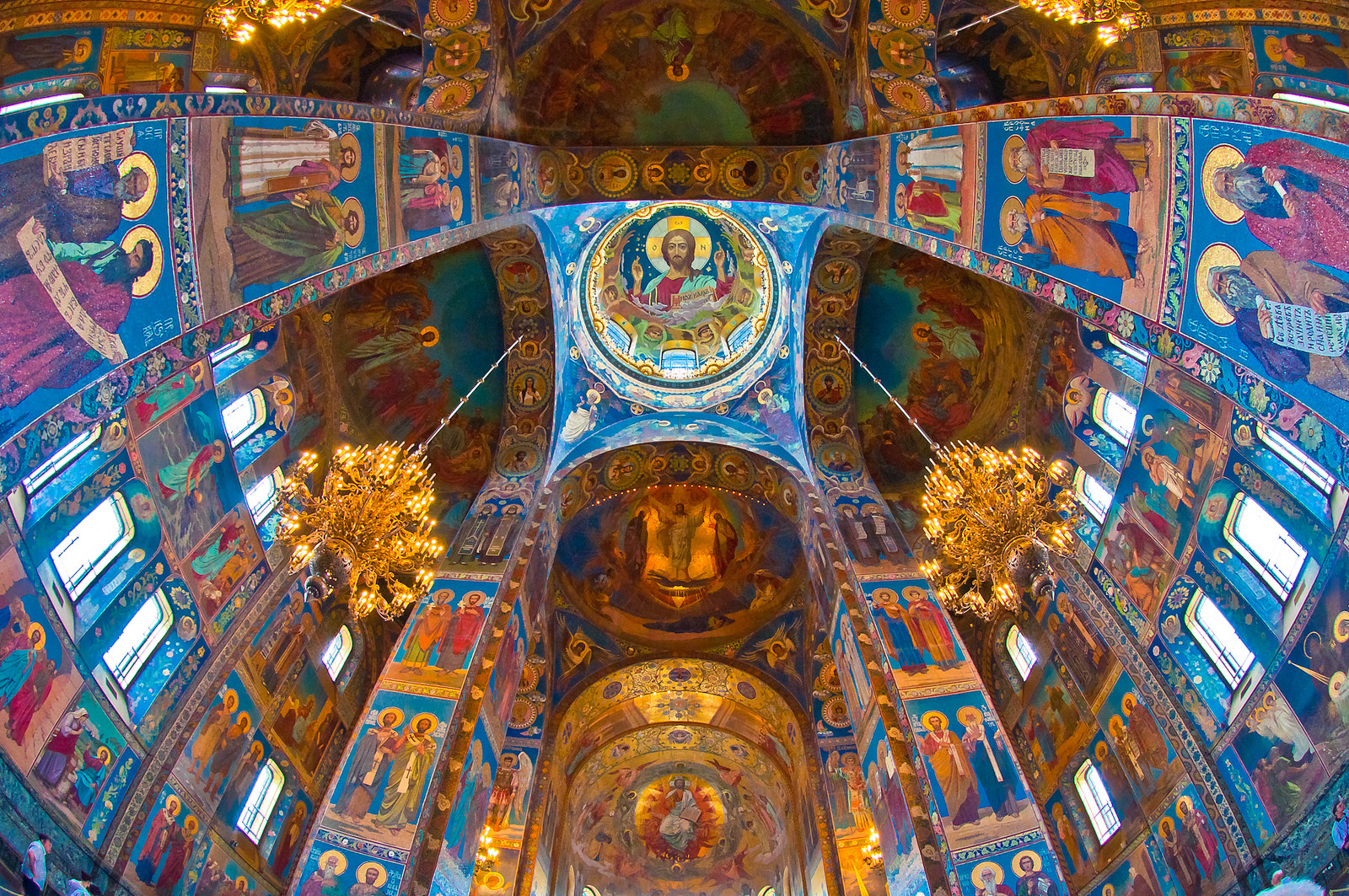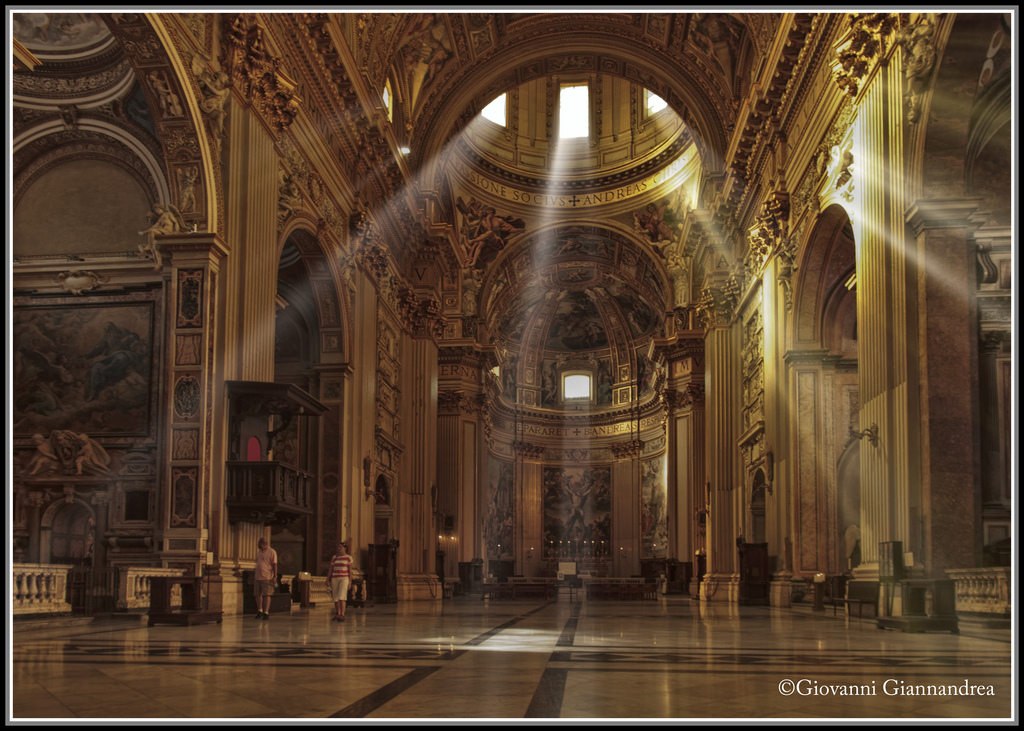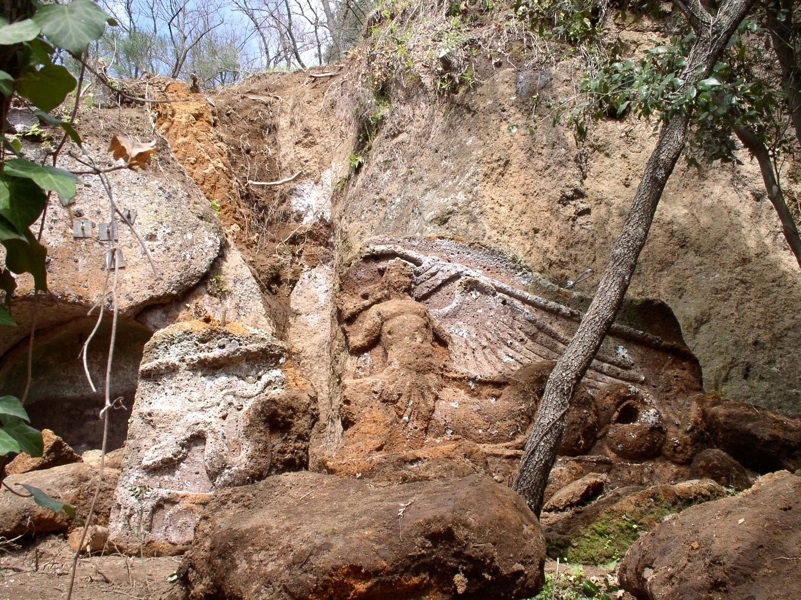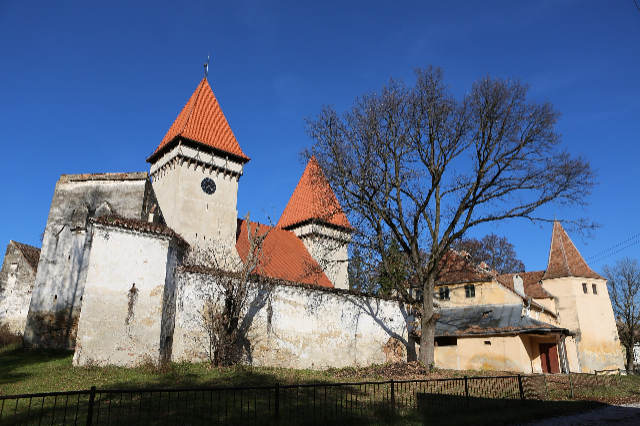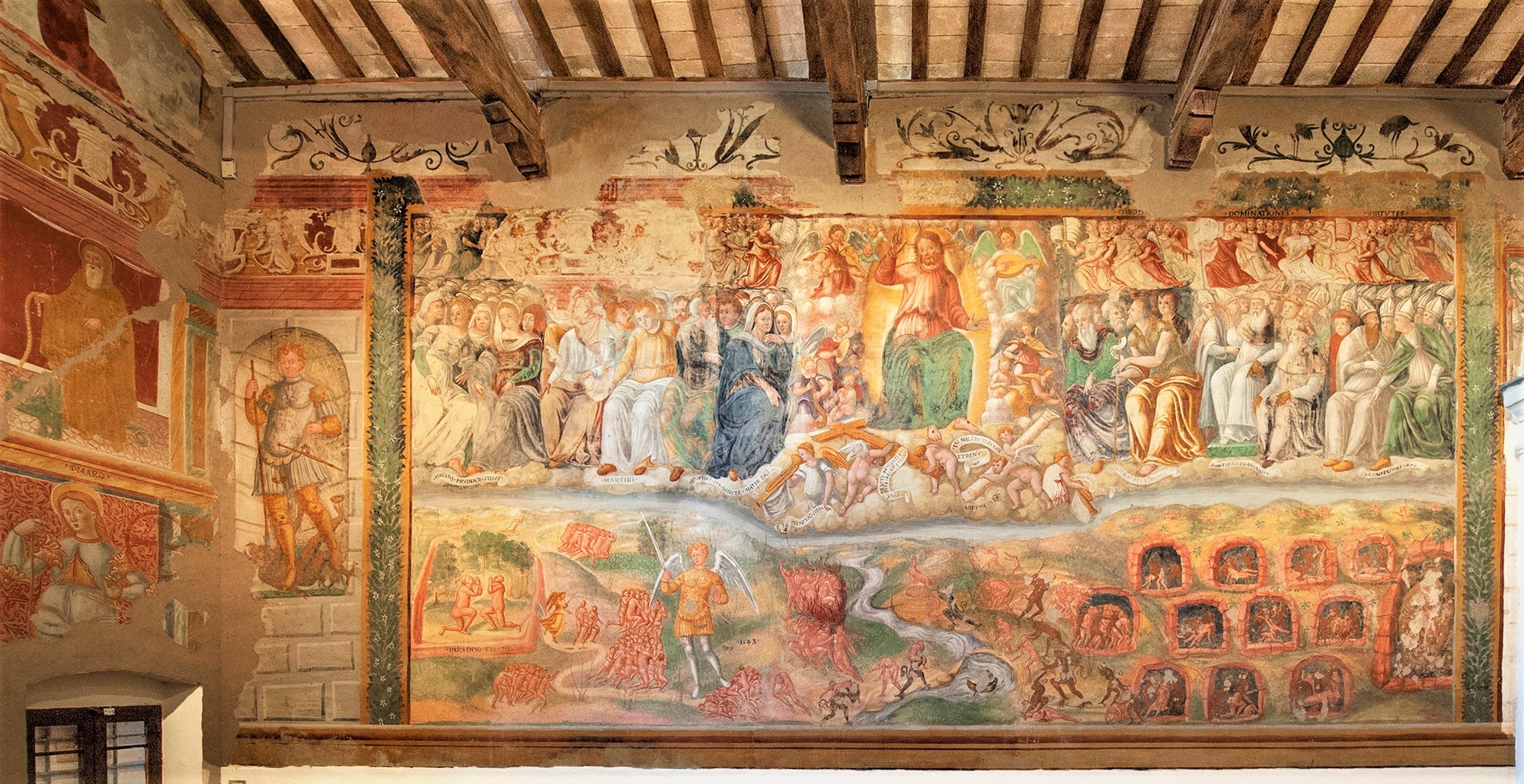he aedicule was a few kilometers from the capital of Southern Italy, in the territory of the municipality of Sant’Anastasia in the district that was called "Arco" because of the presence of arches of an ancient Roman aqueduct. Therefore, the image was called "Madonna dell’Arco."
The shrine, as Br. Ludovico Ayrola testifies to us in a writing from the late seventeenth century, consisted of "a small, poor and ancient factory conicella, in which with simple colors effigyed was seen the most glorious Virgin Mary with a large and superbly venerable face." The painting certainly does not boast artistic merit, but the sad expression of the face dominated by two large eyes that have the effect of penetrating the soul of the beholder is striking, leaving an indelible memory.
On April 6, 1450, an extraordinary event took place. A young man, while playing mallet-ball, was unable to make the ball go farther than that of his opponent, because it was stopped by the trunk of a linden tree, which stood near the shrine of the image of Our Lady of the Arch. The latter began to curse wildly and finally, not content, hurled the ball against the left cheek of the sacred image, from which blood immediately began to drip. The young sacrilegious man would surely have been lynched had not the Count of Sarno promptly intervened. The miracle attracted a huge mass of worshippers, which also brought in huge monetary revenues. A long dispute followed between the Bishop of Nola, the municipality and the Dominicans. Work on the construction of the Shrine of Our Lady of the Arch (which incorporated the shrine and the small church built around it) began in 1593 and ended in 1610, but as early as 1594 the Pope assigned the shrine to the Dominican fathers, who also obtained temporal management. There was no shortage, however, of new and bitter controversies: the municipality demanded contributions, which the latter did not always agree to pay or gave only in part. Amidst all these ugly quarrels, another great miracle took place (compiled by notary Carlo Scalpato of Nola in 1675): the miracle of the stars. A religious of the convent, while praying, saw small golden stars shining around the bruise of Our Lady’s left cheek. Thinking it was a hallucination, he called the Sacristan, then the Prior and finally all the other religious. It was ascertained that it was a real miracle. Next came the Bishop of Nola, the Viceroy of Naples, the Archbishop of Manfredonia Vincenzo Orsini (a Dominican, the future Pope Benedict XIII) and other authorities, all ecstatic at such a prodigy. Previously there had been other miracles. One concerns the rather singular testimony that was given by Aurelia Del Prete, from Sant’Anastasia. For having received a grace, she went on Easter Monday 1589 to the little chapel of the Arch carrying as ex voto two wax feet, one of which fell and shattered in the crowd of worshippers. The woman, throwing the other one to the ground as well, began to blaspheme against Our Lady, those who had painted her and those who worshipped her. After exactly one year, during the night, her feet came off. They were hidden, but people had them dug up. Even today it is still possible to see them displayed in an ancient iron cage. Another miracle occurred in the year when it was decided to cover the present small temple with marble. A large Vesuvian stone was hindering the continuation of the work and there was no way to remove it. Architect Bartolomeo Picchiatti (as he touched the stone) was left with nothing to do but pray to Our Lady with great faith. One half of the stone broke off and fell to the ground. It was displayed in the church, but soon had to be safeguarded from the faithful who took splinters of it out of (too much) devotion. So, it was placed high up in one of the pillars of the small temple. At the back of the small temple is a black marble slab with an inscription commemorating the protection received by more than 8,000 people who took refuge in the shrine during the eruption of Mount Vesuvius from Dec. 15, 1631 to Jan. 20, 1632. Many rubbed a handkerchief over it, then passed it over their foreheads as they invoked Our Lady’s help. On the left side of the small temple with the image of Our Lady an oil lamp burns in perpetuity in remembrance of the healing that many faithful obtained from the plague of 1656. In addition, as a testimony to the superabundant graces received over many centuries by a sea of faithful, the Dominican Friars, on the occasion of the Jubilee of 2000, established at the Shrine of Our Lady of the Arch the Museum of Ex Voto (ranked first in Europe and in the world), which collects in three exhibition halls the painted tablets, objects, valuables and the ancient cage containing the feet of Aurelia Del Prete.
